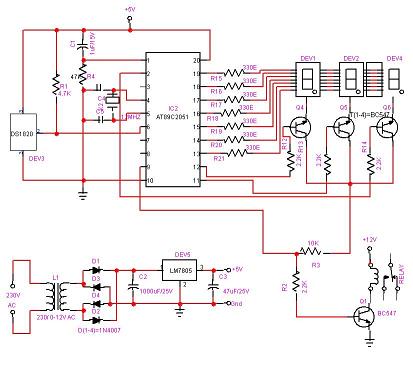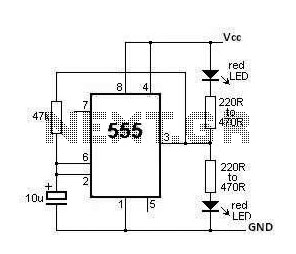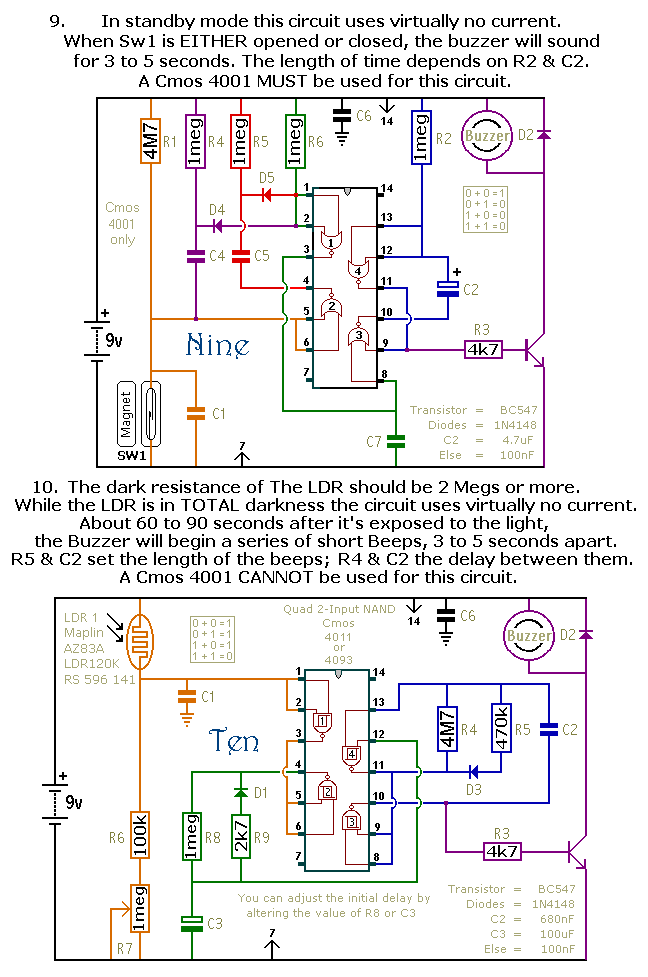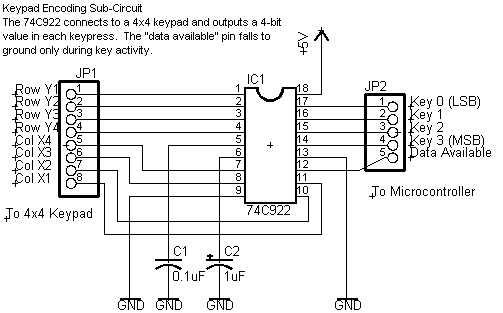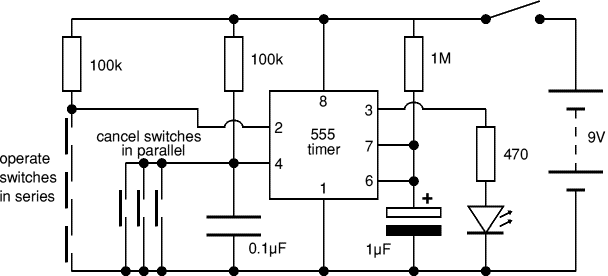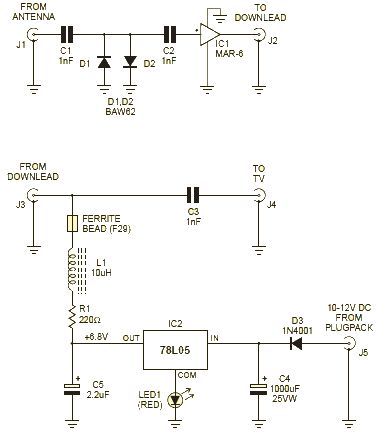
FM TransmitterCircuit & Project Kits

The transmitter is constructed on a Printed Circuit Board (PCB). This board incorporates track inductors for L1, L2, and part of L3. The section surrounding Q1 functions as the oscillator section, with the oscillation frequency determined by L1, C4, and C5, which together form the tank circuit. C5 acts as the feedback capacitor necessary for sustaining oscillation, influencing the operation of the tank formed by L1 and C4. Modulation is directly applied to the base of Q1 through C2, with a microphone connected to facilitate this function. Alternatively, direct audio can be fed into this section after disconnecting the microphone biasing resistor R1. Transistors Q2, Q3, and Q4 progressively increase the output power to the desired level. The RF output from the transmitter is obtained from the junction of C11 and C12, providing an unbalanced output with an impedance of approximately 75 ohms. However, a folded dipole antenna is a balanced type with an impedance of around 300 ohms. Therefore, a Balanced to Unbalanced transformer, or BALUN, is required. A 1:4 type BALUN is utilized for this purpose. The antenna connection is made from this BALUN via a 300-ohm flat parallel feeder cable, commonly used in television to receive terrestrial broadcasts. Coaxial cable is not employed for the antenna feed, which reduces costs, and the parallel feeder cable results in significantly lower signal loss compared to coaxial alternatives.
The transmitter circuit operates on a Printed Circuit Board (PCB), which is designed for compactness and efficiency. The use of track inductors for L1, L2, and part of L3 allows for a streamlined layout that minimizes space while maintaining performance. The oscillator section, centered around transistor Q1, is critical for generating the desired frequency. The tank circuit formed by L1, C4, and C5 is essential for establishing stable oscillations. The feedback provided by capacitor C5 is crucial for maintaining oscillation, directly impacting the stability and frequency of the output signal.
Modulation is introduced at the base of Q1 via coupling capacitor C2, enabling the integration of audio signals into the RF transmission. The inclusion of a microphone allows for real-time audio input, while the option to connect direct audio signals enhances flexibility for various applications. The biasing resistor R1 can be disconnected to facilitate this alternative audio input, ensuring that the circuit remains versatile.
Transistors Q2, Q3, and Q4 are configured in a manner that allows for gradual amplification of the RF signal, ensuring that the output reaches the required power levels without distortion. The RF output is taken from the junction of capacitors C11 and C12, which serve to filter and stabilize the output signal. The unbalanced output impedance of approximately 75 ohms is typical for RF transmitters, but it necessitates the use of a BALUN to connect to a balanced antenna system.
The 1:4 BALUN is specifically designed to match the impedance of the folded dipole antenna, which operates at around 300 ohms. This matching is vital for efficient power transfer and to minimize reflections that could lead to signal loss. The choice of a 300-ohm flat parallel feeder cable for the antenna connection is advantageous, as it reduces costs compared to coaxial cables while also providing lower signal loss, which is beneficial for maintaining signal integrity over distances. This design choice reflects a practical approach to RF transmission, balancing performance with cost-effectiveness.The transmitter is built on a Printed Circuit Board. This board uses track inductor for L1, L2 and part of L3. The section built around Q1 is the oscillator section. Oscillation frequency is determined by L1, C4 & C5 which forms the tank. Actually C5 is the feedback capacitor. This is required to sustain oscillation. This also influence the operat ion of tank formed by L1 & C4. Modulation is directly applied to the base of Q1 via C2. A microphone is connected here to serve this purpose. You can alternately feed direct audio here after disconnecting the microphone biasing resistor R1. Q2, Q3 & Q4 gradually raises the output power up to the desired level. RF output from the transmitter is taken from the junction of C11 & C12. This is unbalanced output of around 75 ohms impedance. But a folded dipole is a balanced type antenna of around 300 ohms impedance. So we need to use a `BALanced to UNbalanced transformer` or `BALUN`. A 1:4 type BALUN is employed here for this purpose. Antenna connection is taken from this BALUN via a 300 ohms flat parallel feeder cable commonly used in television to receive terrestrial broadcast. No coaxia is used to feed antenna. This saves cost. Also a parallel feeder cable provides much less signal loss compared to a coaxial. 🔗 External reference
The transmitter circuit operates on a Printed Circuit Board (PCB), which is designed for compactness and efficiency. The use of track inductors for L1, L2, and part of L3 allows for a streamlined layout that minimizes space while maintaining performance. The oscillator section, centered around transistor Q1, is critical for generating the desired frequency. The tank circuit formed by L1, C4, and C5 is essential for establishing stable oscillations. The feedback provided by capacitor C5 is crucial for maintaining oscillation, directly impacting the stability and frequency of the output signal.
Modulation is introduced at the base of Q1 via coupling capacitor C2, enabling the integration of audio signals into the RF transmission. The inclusion of a microphone allows for real-time audio input, while the option to connect direct audio signals enhances flexibility for various applications. The biasing resistor R1 can be disconnected to facilitate this alternative audio input, ensuring that the circuit remains versatile.
Transistors Q2, Q3, and Q4 are configured in a manner that allows for gradual amplification of the RF signal, ensuring that the output reaches the required power levels without distortion. The RF output is taken from the junction of capacitors C11 and C12, which serve to filter and stabilize the output signal. The unbalanced output impedance of approximately 75 ohms is typical for RF transmitters, but it necessitates the use of a BALUN to connect to a balanced antenna system.
The 1:4 BALUN is specifically designed to match the impedance of the folded dipole antenna, which operates at around 300 ohms. This matching is vital for efficient power transfer and to minimize reflections that could lead to signal loss. The choice of a 300-ohm flat parallel feeder cable for the antenna connection is advantageous, as it reduces costs compared to coaxial cables while also providing lower signal loss, which is beneficial for maintaining signal integrity over distances. This design choice reflects a practical approach to RF transmission, balancing performance with cost-effectiveness.The transmitter is built on a Printed Circuit Board. This board uses track inductor for L1, L2 and part of L3. The section built around Q1 is the oscillator section. Oscillation frequency is determined by L1, C4 & C5 which forms the tank. Actually C5 is the feedback capacitor. This is required to sustain oscillation. This also influence the operat ion of tank formed by L1 & C4. Modulation is directly applied to the base of Q1 via C2. A microphone is connected here to serve this purpose. You can alternately feed direct audio here after disconnecting the microphone biasing resistor R1. Q2, Q3 & Q4 gradually raises the output power up to the desired level. RF output from the transmitter is taken from the junction of C11 & C12. This is unbalanced output of around 75 ohms impedance. But a folded dipole is a balanced type antenna of around 300 ohms impedance. So we need to use a `BALanced to UNbalanced transformer` or `BALUN`. A 1:4 type BALUN is employed here for this purpose. Antenna connection is taken from this BALUN via a 300 ohms flat parallel feeder cable commonly used in television to receive terrestrial broadcast. No coaxia is used to feed antenna. This saves cost. Also a parallel feeder cable provides much less signal loss compared to a coaxial. 🔗 External reference
